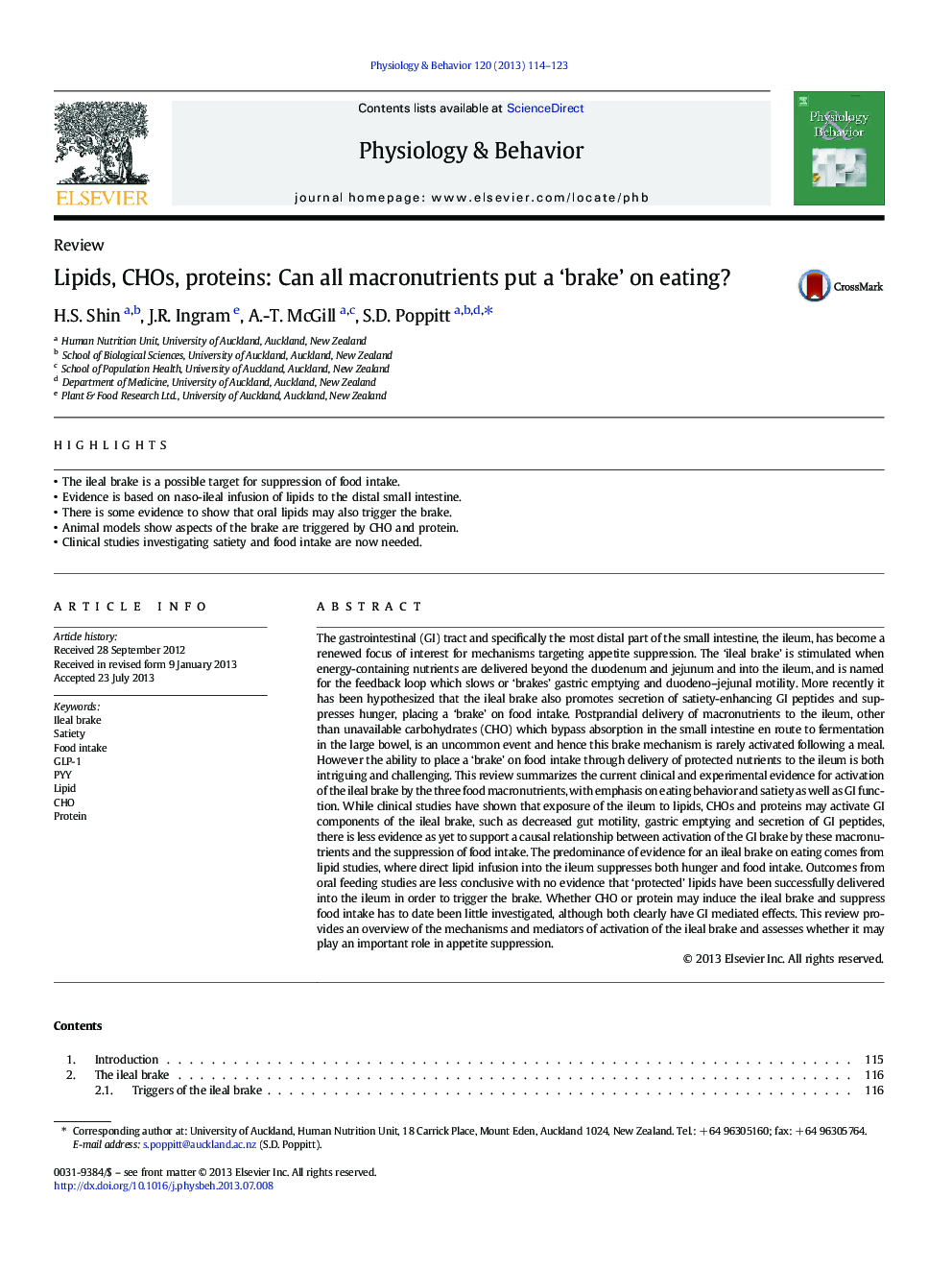| کد مقاله | کد نشریه | سال انتشار | مقاله انگلیسی | نسخه تمام متن |
|---|---|---|---|---|
| 5924633 | 1571197 | 2013 | 10 صفحه PDF | دانلود رایگان |

- The ileal brake is a possible target for suppression of food intake.
- Evidence is based on naso-ileal infusion of lipids to the distal small intestine.
- There is some evidence to show that oral lipids may also trigger the brake.
- Animal models show aspects of the brake are triggered by CHO and protein.
- Clinical studies investigating satiety and food intake are now needed.
The gastrointestinal (GI) tract and specifically the most distal part of the small intestine, the ileum, has become a renewed focus of interest for mechanisms targeting appetite suppression. The 'ileal brake' is stimulated when energy-containing nutrients are delivered beyond the duodenum and jejunum and into the ileum, and is named for the feedback loop which slows or 'brakes' gastric emptying and duodeno-jejunal motility. More recently it has been hypothesized that the ileal brake also promotes secretion of satiety-enhancing GI peptides and suppresses hunger, placing a 'brake' on food intake. Postprandial delivery of macronutrients to the ileum, other than unavailable carbohydrates (CHO) which bypass absorption in the small intestine en route to fermentation in the large bowel, is an uncommon event and hence this brake mechanism is rarely activated following a meal. However the ability to place a 'brake' on food intake through delivery of protected nutrients to the ileum is both intriguing and challenging. This review summarizes the current clinical and experimental evidence for activation of the ileal brake by the three food macronutrients, with emphasis on eating behavior and satiety as well as GI function. While clinical studies have shown that exposure of the ileum to lipids, CHOs and proteins may activate GI components of the ileal brake, such as decreased gut motility, gastric emptying and secretion of GI peptides, there is less evidence as yet to support a causal relationship between activation of the GI brake by these macronutrients and the suppression of food intake. The predominance of evidence for an ileal brake on eating comes from lipid studies, where direct lipid infusion into the ileum suppresses both hunger and food intake. Outcomes from oral feeding studies are less conclusive with no evidence that 'protected' lipids have been successfully delivered into the ileum in order to trigger the brake. Whether CHO or protein may induce the ileal brake and suppress food intake has to date been little investigated, although both clearly have GI mediated effects. This review provides an overview of the mechanisms and mediators of activation of the ileal brake and assesses whether it may play an important role in appetite suppression.
Journal: Physiology & Behavior - Volume 120, 15 August 2013, Pages 114-123